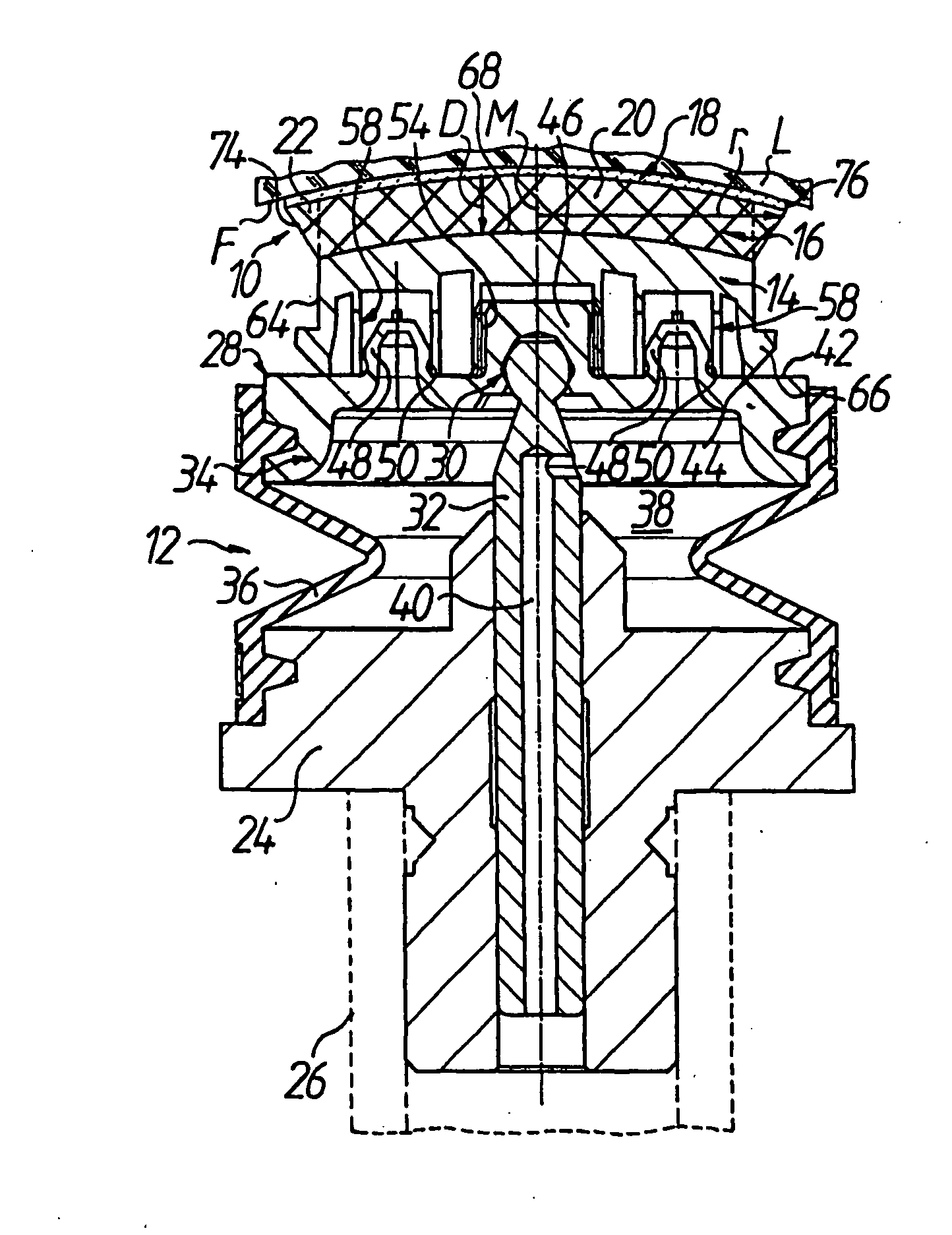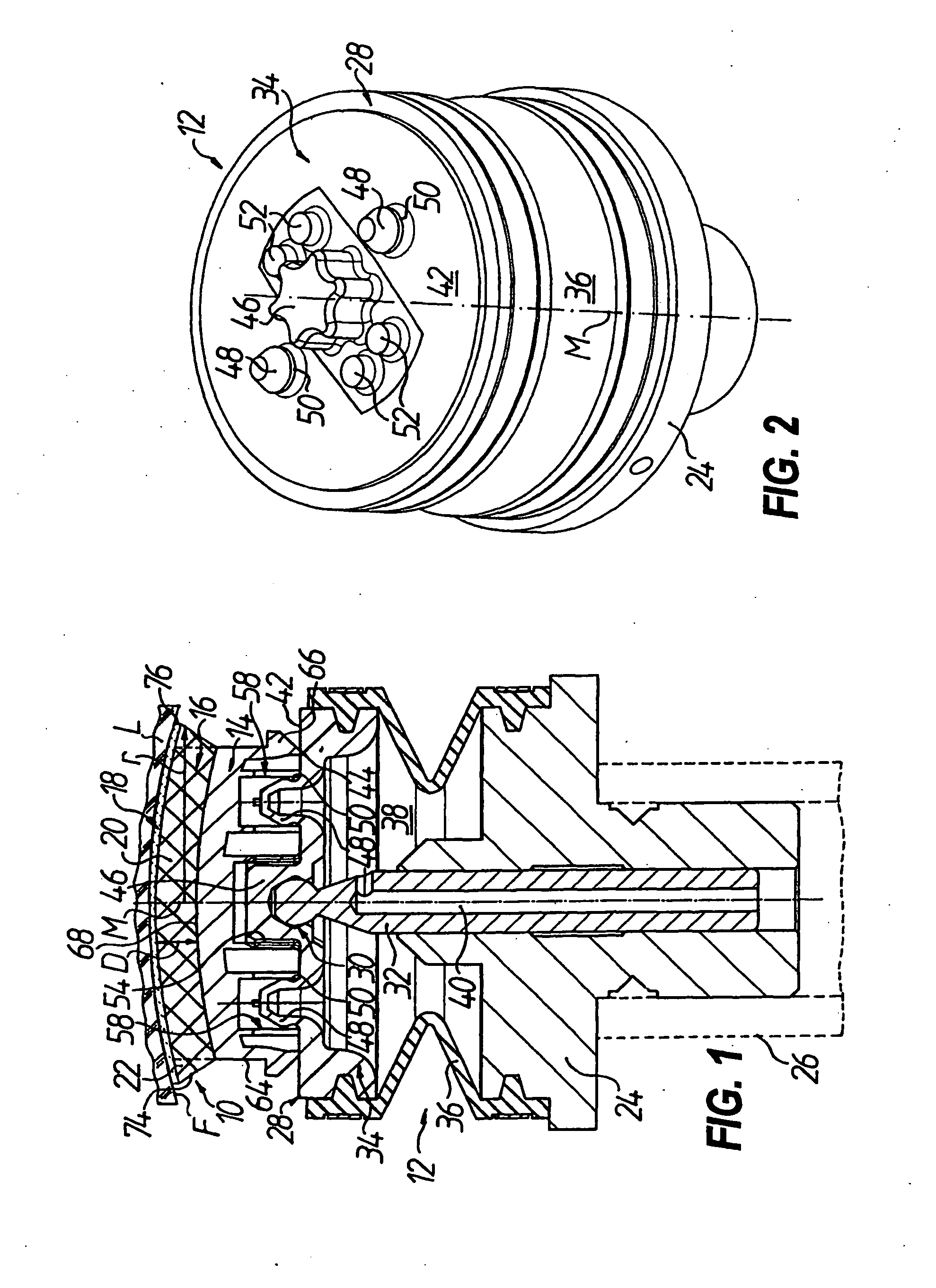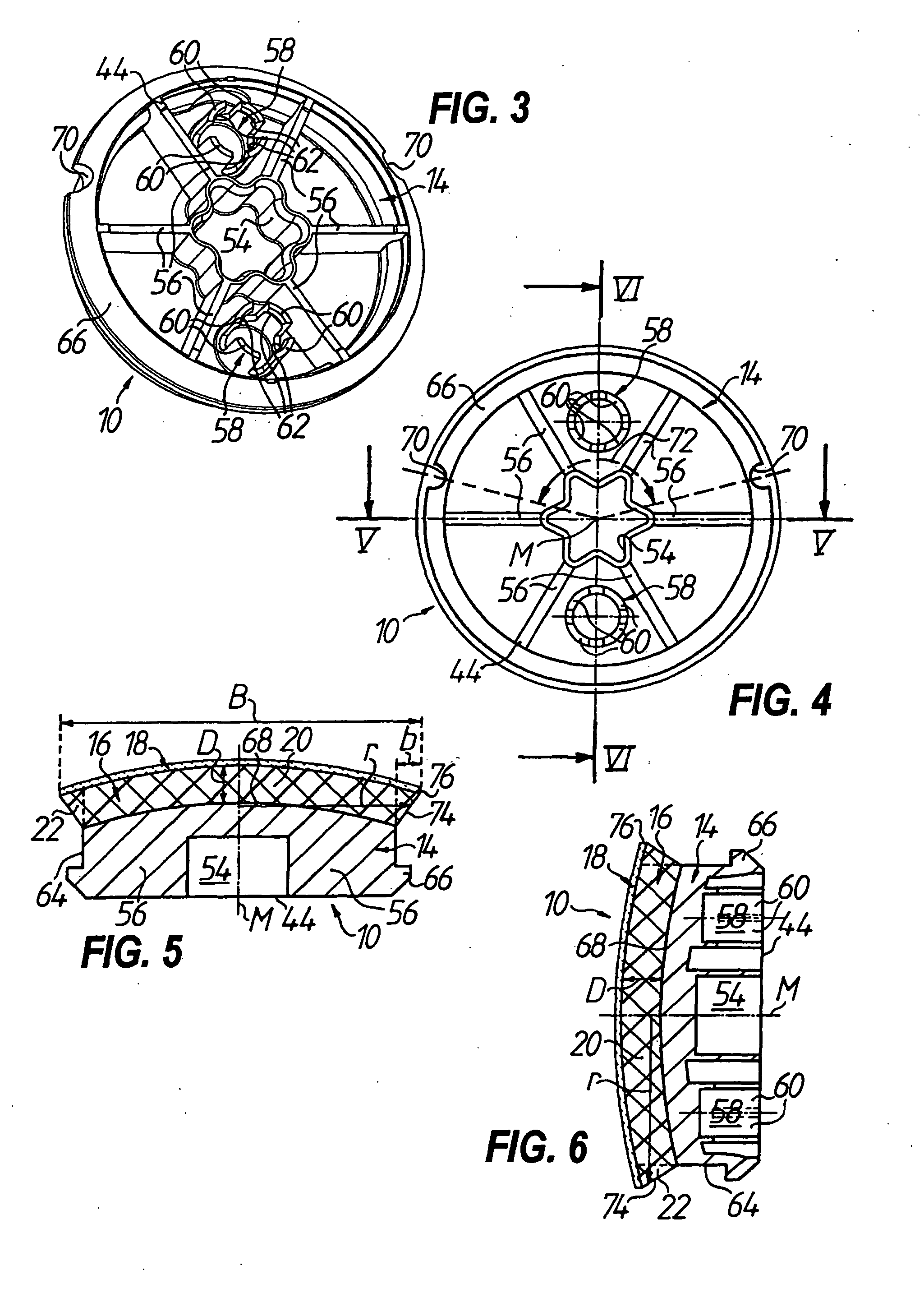Polishing disc for a tool for the fine machining of optically active surfaces particularly on spectacle lenses and method for its production
a technology of optical active surfaces and polishing discs, which is applied in the direction of gear teeth, grinding devices, gear teeth, etc., can solve the problems of not achieving the desired effect, no significant polishing pressure can be exerted on the surface to be machined, and visible and therefore undesirable imprints of polishing film edges, etc., to achieve rapid and accurate production of polishing discs, the effect of quick cutting operation
- Summary
- Abstract
- Description
- Claims
- Application Information
AI Technical Summary
Benefits of technology
Problems solved by technology
Method used
Image
Examples
Embodiment Construction
OF EMBODIMENTS
[0043]According to FIGS. 1, 5, 6 and 9 to 12, a polishing disc 10 for a tool 12 for the fine machining of optically active surfaces F particularly on spectacle lenses L comprises a main body 14 which has a center axis M and on which there is fixed an intermediate layer 16 which is softer than the main body 14 and on which a polishing agent carrier 18 rests. It is essential that the intermediate layer 16 has, with respect to the center axis M, a radial inner region 20 of substantially constant axial thickness D and an adjoining radial outer region 22 which, as will be described in greater detail below, is designed and fixed in a particular way so as to prevent the edge of the polishing disc 10 from being imprinted on the machined surface F of the spectacle lens L in the form of very fine, scratch-like microstructures. In FIGS. 1, 5, 6 and 9 to 12, dashed lines indicate the boundary between the radial inner region 20 and the radial outer region 22 of the intermediate lay...
PUM
| Property | Measurement | Unit |
|---|---|---|
| Fraction | aaaaa | aaaaa |
| Fraction | aaaaa | aaaaa |
| Thickness | aaaaa | aaaaa |
Abstract
Description
Claims
Application Information
 Login to View More
Login to View More - R&D
- Intellectual Property
- Life Sciences
- Materials
- Tech Scout
- Unparalleled Data Quality
- Higher Quality Content
- 60% Fewer Hallucinations
Browse by: Latest US Patents, China's latest patents, Technical Efficacy Thesaurus, Application Domain, Technology Topic, Popular Technical Reports.
© 2025 PatSnap. All rights reserved.Legal|Privacy policy|Modern Slavery Act Transparency Statement|Sitemap|About US| Contact US: help@patsnap.com



